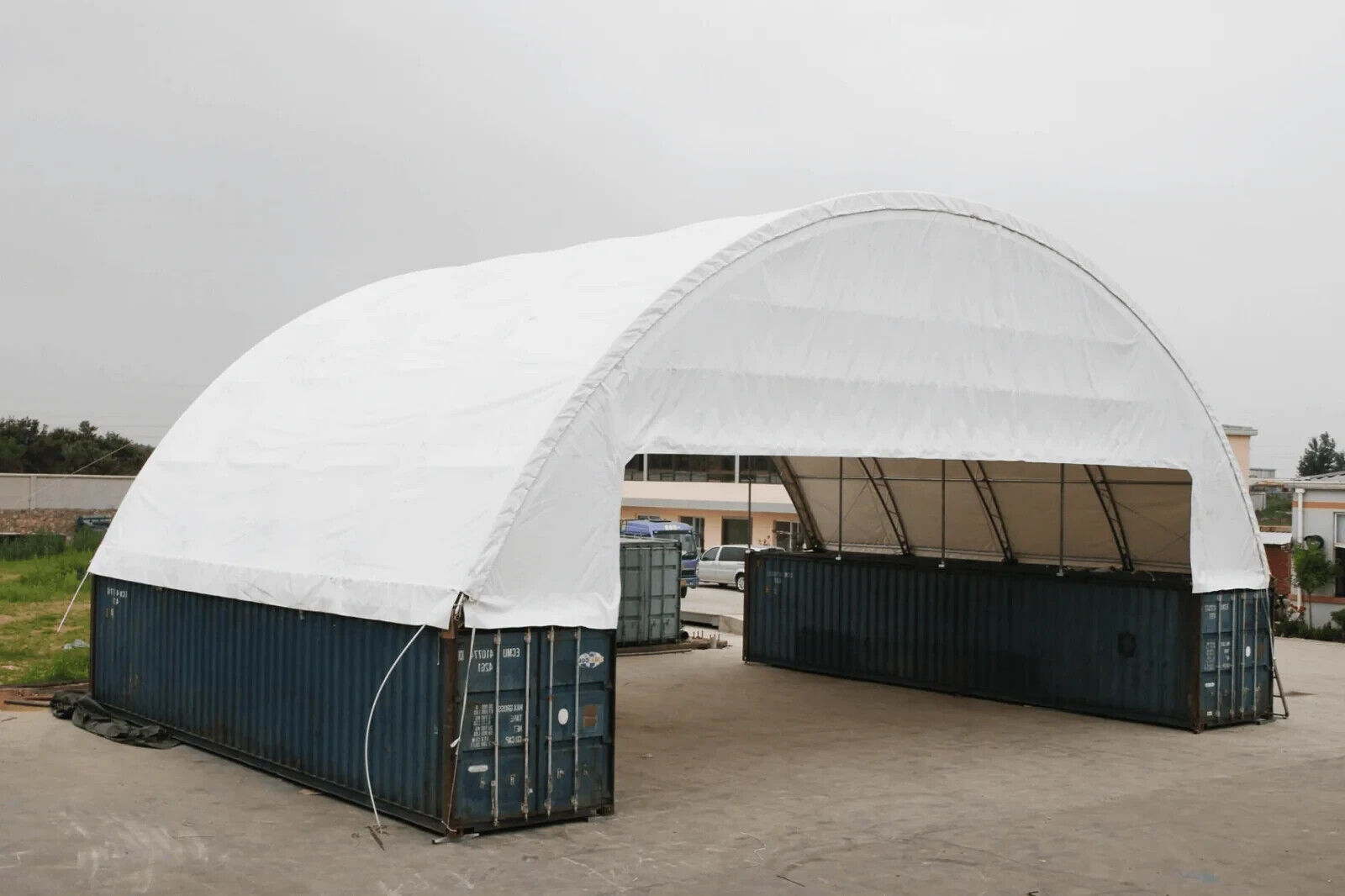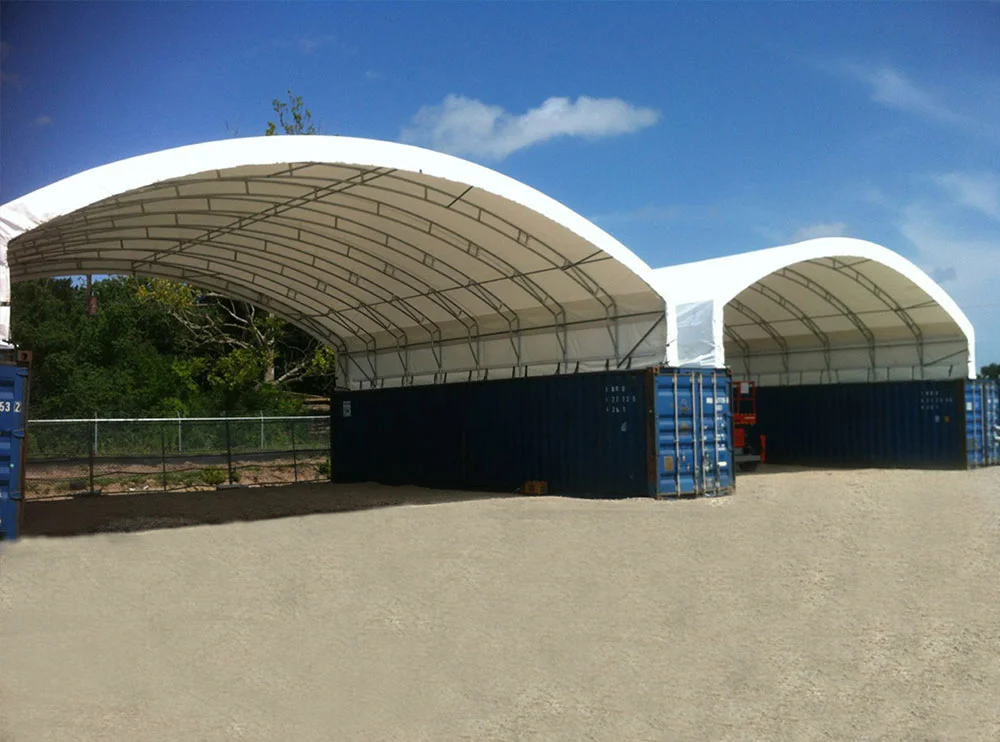Ultimate Guide To Shipping Container Canopy Shelters: Everything You Need To Know
Introduction
The adaptability and longevity of shipping containers have led to their rising popularity in the construction industry in recent years. Shipping container canopy shelters are one creative use that is becoming more popular. These structures are a great compromise between shipping container durability and canopy shelter adaptability; they may serve many functions, including storage, outdoor offices, and more. Shipping container canopy shelters are the subject of this all-inclusive reference, which delves deeply into their designs, building processes, advantages, and practical issues.
What Is A Shipping Container Canopy Shelter?

A shipping container canopy shelter is a building that incorporates a canopy system with one or more shipping containers. This setup offers shelter from the elements, room to store things, and typically, even more features that are customized to meet individual requirements. Shelters like these can serve many purposes due to their versatility and scalability, ranging from basic storage to extravagant event spaces.
Benefits Of Shipping Container Canopy Shelters
- Longevity and Safety: Shipping containers’ sturdy construction is well-known for their ability to endure the challenges of transoceanic transit. Canopy shelters made from them are more secure and weatherproof, so they last longer and are more dependable.
- Adaptability in Style: The adaptability of shipping container canopy shelters is a major plus. Their sizes, settings, and capabilities are all up for grabs when it comes to personalization. You can modify their design to fit your needs, whether you need them for a short time, a long time, or as mobile units.
- Convenience and Portability during Installation: Canopy shelters made of shipping containers are more convenient to carry and set up than conventional buildings. Their adaptability and ease of assembly make them perfect for one-time uses, relief operations after natural disasters, or seasonal festivities.
- The Affordability: Shelters built from shipping containers can be a great financial boon when compared to more traditional building techniques. Because of their longevity and reusability, shipping containers can be reused multiple times, cutting down on material costs and maintenance expenditures.
- Sustainability in the Environment: By transforming shipping containers into shelters with canopies, we can recycle resources and increase sustainability. In keeping with current environmental requirements, this green method lessens the environmental impact of building projects.
Reasons Why You Should Consider Placing A Shipping Container Canopy
A Base That Is Inherently Secure
A shipping container canopy’s strong, stable base sets it apart from other types of temporary structures. Strong, hefty, and impervious to movement and weather, shipping containers are ideal for transporting goods. Owing to the specialized clamping and locking mechanism designed for these canopies, you can rest assured that your shelter will be safely installed in any weather. Shipping containers are becoming more accessible, but they can also be utilized with other flat, strong walls like those constructed with interlocking concrete blocks.
Whenever You Require It
A temporary cover like this has several applications, but among the most prevalent is serving as a makeshift storage solution.
Companies usually make sure they have adequate warehouse and storage space to satisfy their demands. Still, there will be times when they are extremely busy or dealing with complicated issues, and their current infrastructure will not be able to handle their immediate demands. It may be required even if there are unexpected changes in the weather or problems with the main storage site of some important company assets.
For instance, if the present site’s capacity is intended for a just-in-time procedure that is hindered by delays, and there are finished goods that are waiting to be transported farther down the supply chain, then there can be an excess of product and insufficient space. A makeshift canopy, complete with walls and a door, can be set up here to shield the completed goods from the elements until they are ready to be shipped. Another option is to use the same method for storing automobiles, machinery, and even cattle.
Keeping Things Safe
You can have a lot of storage space in a short area because the containers supporting the canopy can still be used at this time. Additionally, the cover can accommodate additional storage containers, which can shield aggregates, dirt, and other bulk cargo from less-than-ideal weather conditions.
Design Considerations
When making plans for a shipping container canopy cover, you should think about the following:
- Size and Configuration: Calculate the number and size of containers you need based on their use and the available space.
- Local Climate and Weather: The local climate should be considered when choosing design elements like insulation, ventilation, and canopy material.
- Environment and Weather: Things like insulation, ventilation, and the material used for the canopy should be chosen based on the environment where the structure will be used.
Applications Of Shipping Container Canopy Shelters
- Storage and Warehousing: On industrial sites or agricultural operations, this storage solution is ideal for keeping equipment, inventory, and materials.
- Workshops and Manufacturing: It offers a covered workspace for various businesses, enabling operations to continue regardless of weather conditions.
- Retail and Event Spaces: Pop-up shops, ticket booths, and covered event areas for festivals and fairs are all alternatives that can be altered to fit this space.
- Emergency Shelters: These are utilized in disaster assistance situations to provide reaction teams with temporary lodging or operational bases.
Industry-Related Shipping Container Canopy Shelters

Construction Sites: Shipping container shelters can be used to cover outdoor work areas so that construction workers can do things like painting, cutting, and welding. The fabric cover makes a big, clear-span dome shelter that can be used to store building materials and large pieces of equipment.
Government: Fabric covers for shipping containers are a great way for local governments to store salt and sand. The lack of interior support beams makes it easy for trucks and plows to get to the dry goods and quickly deploy them. To keep sand and salt dry, you can add an end door or end wall.
Agriculture: Farmers and other farming businesses frequently use the canopies of shipping containers to protect livestock, hay, and farm machinery like tractors, harvesters, and plows.
Oil and Gas: Areas for blasting and painting, storage, and storing tools close to the workplace.
Mining and Minerals: Processing minerals, working in the field, providing temporary shelter, creating extra room, and storing materials and tools.
Trucking Companies: A shipping container canopy gives you a place to work on cars and store your tools that are covered.
Conclusion
Canopy shelters made of shipping containers are an innovative answer to many practical and logistical problems in many different fields. Any company or group looking for a fresh approach to outdoor space utilization would do well to consider their sustainability, adaptability, and long-term viability. These shelters provide useful features and innovative opportunities that influence contemporary building techniques, whether for short-term projects, long-term buildings, or emergency scenarios.
Learn More: Chery Industrial Container Shelter is a specialized category of container shelters designed to meet the unique demands of industrial and commercial applications. Featuring a combination of durable materials and robust truss options, these shelters offer exceptional performance. Enjoy 15% off container shelters from Chery Industrial using this exclusive coupon: CHERY15


